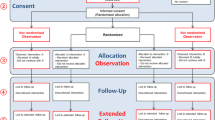Abstract
Field-based patient-reported outcome (PRO) assessments, including measures of signs, symptoms, and events that are administered outside of the research clinic, can be critical in evaluating the efficacy and safety of new medical treatments. Collection of this type of data commonly involves providing subjects with stand-alone electronic devices, such as smartphones, that they can use to respond to assessments in their home or work environment. Although this approach has proven useful, it is also limited in several ways: For example, provisioning stand-alone devices can be costly for sponsors, and requiring subjects to carry a device that is exclusively dedicated to the study can be burdensome. The “Bring Your Own Device” (BYOD) approach, in which subjects use their own smartphone or Internet-enabled device to complete field-based PRO assessments, addresses many of these concerns. However, the BYOD model has its own limitations that should be considered. In this article, representatives of the ePRO Consortium review operational, privacy/security, and scientific/regulatory considerations regarding BYOD. We hope that this review will allow researchers to make informed decisions when choosing methods to collect field-based PRO data in future clinical trials. Additionally, we hope that the discussion in this article will establish a research agenda for further examination of BYOD approaches.
Similar content being viewed by others
References
Coons SJ, Eremenco S, Lundy JJ, O’Donohoe P, O’Gorman H, Malizia W. Capturing patient-reported outcome (PRO) data electronically: the past, present, and promise of ePRO measurement in clinical trials. Patient. 2015;8:301–309.
Stone AA, Shiffman S, Schwartz JE, Broderick JE, Hufford MR. Patient non-compliance with paper diaries. Br Med J. 2002;324:1193–1194.
McKenzie S, Paty J, Grogan D, et al. Proving the eDiary dividend. Appl Clin Trials. 2004;13:54–68.
European Medicines Agency. Guideline on clinical investigation of medicinal products in the treatment of chronic obstructive pulmonary disease (COPD). 2012; London, England.
European Medicines Agency. Note for Guidance on Clinical Investigation of Medicinal Products for Treatment of Asthma. 2013; London, England.
Hufford MR, Shields AL. Electronic diaries: applications and what works in the field. Appl Clin Trials. 2002;11:46–59.
Ericsson Mobility Report. http://www.ericsson.com/res/docs/2015/ericsson-mobility-report-june-2015.pdf. Published June 2015.
The Nielsen Company. Mobile millennials: over 85% of generation Y owns smartphones. September 5, 2014. http://www.nielsen.com/us/en/insights/news/2014/mobile-millennials-over-85-percent-of-generation-y-owns-smartphones.html.
US Department of Health and Human Services. Code of Federal Regulations Title 21, Part 11. http://www.accessdata.fda.gov/scripts/cdrh/cfdocs/cfcfr/CFRSearch.cfm?CFRPart=11.
Liddle J, Ireland D, McBride SJ, et al. Measuring the Lifespace of People With Parkinson’s Disease Using Smartphones: Proof of Principle. JMIR Mhealth Uhealth. 2014;2:e13.
European Medicines Agency. Reflection Paper on the Regulatory Guidance for the Use of Health Related Quality of Life (HRQL) Measures in the Evaluation of Medicinal Products. London: European Medicines Agency; 2005.
US Food and Drug Administration. Guidance for Industry: Patient-Reported Outcome Measures: Use in Medical Product Development to Support Labeling Claims. Rockville, MD: U.S. Department of Health and Human Services, Food and Drug Administration, Center for Drug Evaluation and Research; 2009.
Patrick DL, Burke LB, Gwaltney CJ, et al. Establishing and reporting evidence of the content validity of newly-developed patient-reported outcome (PRO) instruments for medical product evaluation: good research practices. Part I: eliciting concepts for a new PRO instrument. Value Health. 2011;14:967–977.
Patrick DL, Burke LB, Gwaltney CJ, et al. Establishing and reporting evidence of the content validity of newly-developed patient-reported outcome (PRO) instruments for medical product evaluation: good research practices. Part II: assessing respondent understanding. Value Health. 2011;14:978–988.
American Psychological Association and the National Council on Measurement in Education. Standards for Educational and Psychological Testing. Washington, DC: American Educational Research Association; 2002.
Coons SJ, Gwaltney CJ, Hays RD, et al. Recommendations on evidence needed to support measurement equivalence between electronic and paper-based patient-reported outcome (PRO) measures: ISPOR ePRO Good Research Practices Task Force Report. Value Health. 2009;12:419–429.
Eremenco S, Coons SJ, Paty J, et al. PRO data collection in clinical trials using mixed modes: report of the ISPOR PRO Mixed Modes Good Research Practices Task Force. Value Health. 2014;17:501–516.
ePRO Consortium. Best practices for migrating existing patient-reported outcome instruments to a new data collection mode. http://c-path.org/wp-content/uploads/2014/05/BestPracticesForMigratingExistingPROInstrumentstoaNewDataCollectionMode.pdf. Published 2014.
Bjorner JB, Rose M, Gandek B, et al. Method of administration of PROMIS scales did not significantly impact score level, reliability, or validity. J Clin Epidemiol. 2014;67:108–113.
Lauritsen K, Innocenti AD, Hendel L, et al. Symptom recording in a randomized clinical trial: paper diaries vs. electronic or telephone data capture. Control Clin Trials. 2004;25:585–597.
Strober BE, Nyirady J, Mallya UG, et al. Item-level psychometric properties for a new patient-reported Psoriasis Symptom Diary. Value Health. 2014;16:1014–1022.
Author information
Authors and Affiliations
Consortia
Corresponding author
Additional information
Author Note
This article was prepared on behalf of the ePRO Consortium, which was established by the Critical Path Institute in cooperation with firms that provide electronic data collection technologies/services to the medical products industry for capturing patient-reported outcome (PRO) endpoints in clinical trials. The Critical Path Institute is supported, in part, by grant number 1U18FD005320 from the US Food and Drug Administration.
Rights and permissions
About this article
Cite this article
Gwaltney, C., Coons, S.J., O’Donohoe, P. et al. “Bring Your Own Device” (BYOD): The Future of Field-Based Patient-Reported Outcome Data Collection in Clinical Trials?. Ther Innov Regul Sci 49, 783–791 (2015). https://doi.org/10.1177/2168479015609104
Received:
Accepted:
Published:
Issue Date:
DOI: https://doi.org/10.1177/2168479015609104




